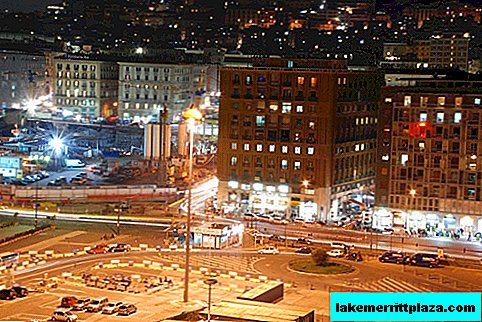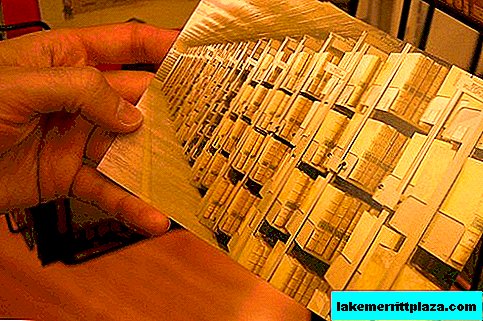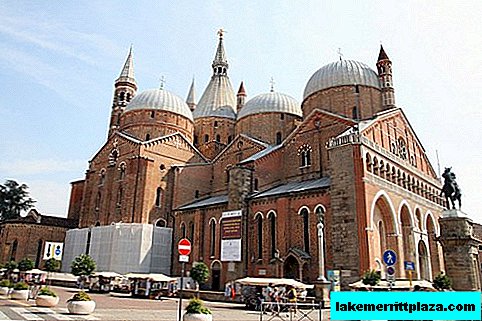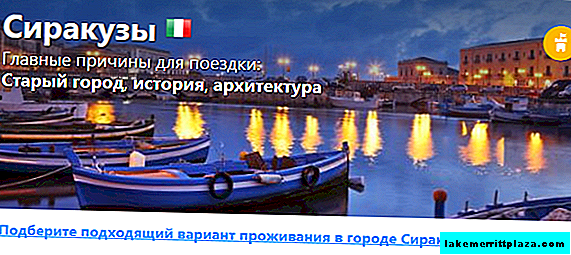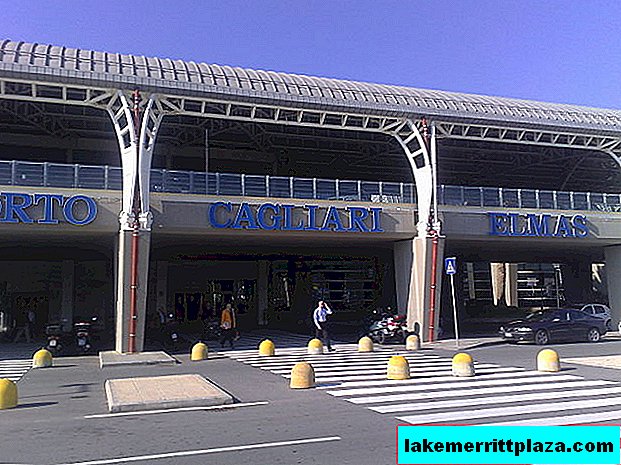The Cathedral in Siena (Duomo di Siena) - the history of the city imprinted in marble and a worthy decoration of Tuscany, and indeed of Italy. For nearly 8 centuries, sparing no money, the Sienans adorned their beloved brainchild. Any tourist in Piazza del Duomo pauses, contemplating the unreal beauty of stone lace floating in the air. It all began in the alarming 13th century.

Cathedral History
Italy in the XIII century became the scene of the internecine struggle of cities for power, land and prestige. Rich Florence was the eternal rival of the proud Siena, whose citizens desperately believed in the help and intercession of the Virgin Mary. It was They who dedicated the temple to it grander than all Florentine buildings - the Cathedral of the Assumption of the Blessed Mary (Cattedrale di Santa Maria Assunta). Its construction began in 1215 and was nearing completion when the Sienans received the ultimatum of Florence in 1260: to surrender the city and destroy the city walls wherever their army pleases.
There was no time to organize defense, and the residents, collecting the keys to all the gates of the city, laid them on the altar to the image of the Virgin, entrusting themselves to Her protection. A miracle happened: at the Battle of Montaperti (September 4, 1260), a tiny army of Siena defeated the hired Florentine troops. Since then, the citizens of Siena have not been more important and honorable than the decoration of the Duomo in gratitude to the Virgin for help.
In 1263, the dome was erected, after 40 years - the bell tower. But Siena’s ambitions have grown over the years: around the Duomo di Siena began to build a new cathedral - Duomo Nuovo, more grandiose than St. Peter's Basilica in the Vatican. Gigantic walls were erected for 10 years, until the plague of 1348 mowed 4/5 of the population, and the bloodless city nevertheless submitted to Florence.
The unfinished wall in memory of the punishment for pride remained next to the Siena Cathedral - a symbol of heavenly help.
To decorate the cathedral, the citizens of Siena invited famous masters, generously paying for their work. The decoration of the interior and facades continued in the 19th century, when the pediments were decorated with gilded mosaics in the 20th century. cast from bronze the central door with a bas-relief "Glorification of the Virgin"; The 2006 restoration restored all the elements of jewelry that were created over the centuries. Today, Siena Cathedral is an active church with Catholic services and at the same time a museum complex with 8 main expositions.
External review
Siena Cathedral is the earliest of the outstanding monuments of European Gothic.The western facade of the building reflects the organic transition of elements of the Romanesque style into the Gothic. Semicircular Romanesque arches with three portals are crowned with triangles of fronts, after which the composition irresistibly rises upwards, ending with pointed spiers. The naturalness of changing styles without violating harmony is only possible for brilliant craftsmen, who were the father and son of Niccolo and Giovanni Pisano in the 13th century. They were invited from Pisa by the monks of Pisces for the construction of the cathedral.

The decoration of the lower facade was performed by Giovani Pisano in the 80-90s of the XIII century. The tympans of the three entrance gables contain (without signatures) reliefs of the 3 saints of Siena. The sculptures of lions at the main entrance serve as the foot for the statues of the biblical kings David and Solomon. Figures crowning the lower portal on the left: Isaiah, Valaam (the one to whom the Valaam donkey inspired: “A star rises from the East” - he holds this inscription in his hands); Plato, Daniel, and one of the Sybil diviners. To the right of the main entrance are: Moses and Simeon the God-Receiver, Mariam - the sister of Moses and Aristotle. Among the prophets of Christ, immortalized on the facade of the Cathedral of Siena, were thus, along with the biblical prophets, and the Greek Sibyls and ancient philosophers. Their statues rest on the statues of horses and bulls.
The upper façade is often made at the beginning of the 14th century: two pairs of evangelists on the right and left stand at the base of the central spiers of the cathedral, between which there is a stained glass window "The Last Supper", by Pastorino de Pastorini (mid-16th century). Crowns the central composition of the pediment with a gilded mosaic "Coronation of the Virgin" by Venetian artists L. Mussini (Luigi Mussini) and A.Franchi (Alessandro Franchi) in the 19th century ... The side pediments are decorated with their works: Adoration of the Magi and Introduction to the Virgin Church "
The western facade of the Cathedral of Siena is an expression of the city’s love for the Blessed Virgin, which they carried through the centuries.
The unique design of the walls of the cathedral is marble cladding in the form of alternating strips of white and black-green marble - the idea of Giovani Pisano. White and black - the color of the color of the horses of the legendary founders of the city of Senius and Ascius. They rushed here on white and raven horses in search of refuge from the persecution of Romulus, who killed Remus, their father. The combination of black and white has become the heraldic sign of the city of Siena.

The side walls, eastern facade, tower are decorated with symbolic stripes and give the cathedral lightness and elegance. Blotches of red marble in the decoration are made with an amazing taste and enhance a joyful and festive impression.
The belfry with a square section, an octagonal spire and turrets was erected in 1313 by the brothers Agnolo and Agostinho Ventura - this is the dominant peak in the city. To the left of the cathedral is the burial place of the brilliant founder of the cathedral - Giovani Pisano, the inscription dates from the XIV century. On the right is a statue of the legendary she-wolf feeding Romulus and Remus, the uncle and father of the founders of the city. Sienans considered it a symbol of their city.

The cathedral is especially beautiful at the end of the day under the oblique rays of the sun, at which time it is best to photograph it, even the stained-glass windows in the oena socket become visible.
Interior decoration
The plan of Siena Cathedral has the shape of a Catholic cross. Inside, it consists of three longitudinal nave corridors and a transverse overlap - the transept. Between the naves - arcades of 18-meter columns of black and white marble, creating the impression of a slight dizziness from the abundance of beauty.
Central nave

The semicircular arches between the massive columns of the nave are a sign of the Romanesque style: powerful and austere. The columns of the Corinthian order bear the arches of the ceiling. On the right and left, busts of 172 popes and 36 emperors are stroking down from a great height of cornices. Almost all of them are on the same face, because made on 4-5 stencils, individuality is embodied in the signatures of the names under the sculptures. Gallery on the ledges was created during the Renaissance - at the beginning of the XVI century.
Where the central nave intersects with the transept, the dome space rises upward (54 m in height and 16 m in diameter). The dark blue background of the dome in the Romanesque style is dotted with stars, the elaborate painting creates the illusion of relief. 12 stained-glass windows (XIX century) located on the drum of the dome shed light on the splendor of the interior.
The department

The sculptural masterpiece of the 13th century is the gift-guard department of the work of Nicolo Pisano. An octagonal structure made of snow-white Carrara marble is held on dark granite-porphyry columns. Four of them stand on pedestals, and for the rest, two lions and two lionesses have their backs framed. The central column is held by allegories of the Seven Free Arts: Grammar, Dialectics, Rhetoric, Arithmetic, Geometry, Music, Astronomy in company with Philosophy.
Reliefs of seven biblical plots made in marble are the main decoration of the department. They depict:
- Nativity;
- Coming of the Magi to worship;
- The flight of the Holy Family to Egypt;
- The massacre of Bethlehem babies by Herod;
- Crucifixion;
- Pictures of the End of the World;
- The judgment and punishment of sinners.
A skillful composition containing 4 hundreds of figures of people and animals is in the left transept of the cathedral immediately after overcoming the domed space. Nearby is the impressive Nativity scene with full-length human figures.
Left nave
On the left corridor-nave there are sculptural works of Michelangelo, Donatello, the wonderful Piccolomini Library.

Piccolomini's altar is dedicated to Pope Pius II and was created at the end of the 15th century. master A. Breño (Andrea Bregno). The altar is framed by the figures of the apostles Peter and Paul, Saints Gregory and Pius, the work of the early Michelangelo. The great sculptor did not complete the order to the end: the niche for the Apostle Matthew remained empty. At this time (1501-1504), the artist was absorbed in the idea of his main masterpiece - the sculpture of David. The icon "Madonna and Child" (Paolo di Giovanni Fei, 1385) is placed in the altar.
The Piccolomini Library (Libreria Piccolomini) amazes everyone with a childish joyful play of colors. Through the efforts of the artist Pinturicchio (real name Bernardino di Betto di Biagio) in 1503-1509 the walls of the library became the pages of a book that tells about the life events of Pope Pius II - "beloved son of Siena". 10 murals depict all his literary, diplomatic and religious activities. The last episode: after the Turks captured Constantinople, the pope tries to organize an alliance of European countries to protect Christian shrines and dies in the port of Ancona, having learned that no one is coming.
Three naked graces in the middle of the hall are a sign of high antiquity, which inspired humanist artists. Several times they were removed from the hall under the pretext of obscenity, but nevertheless they were returned to their former place.
The Chapel of St. John the Baptist was created to hold the saint's right hand, which appeared in the cathedral in the 15th century. The bronze statue of John the Baptist by Donatello is the main decoration of the chapel, which is also painted with Pinturicchio frescoes. Donatello’s hand created two more relics of the cathedral: a statue of Maria Magdalene and a tombstone of Bishop Giovanni Pecci.
Icons of the Virgin

After defeating Florence in 1260, grateful residents erected a new altar for the Blessed Virgin. The icon for him was written by Dietisalvi di Speme, it was called Madonna del Voto. The image, copying the Byzantine Hodegetria-Guide, was liked by the citizens of Siena. Five times in the history of the city at times of danger, a procession around the cathedral and the rite of the position of the keys in the altar before its image took place. The chapel "Madonna del Voto" (Capella della Madonna del Voto) is in the right transept of the cathedral.

The most important of the cathedral is the Madonna of Maesta (Madonna Maesta, 1311) - the Virgin in glory. Performed by the famous Duccio di Buoninsegna, who was considered the pride of the Siena school of painting, this work was the highest achievement of Gothic art. The image of the Virgin on the throne, surrounded by angels and saints, is accompanied by miniatures from the life of Christ and the Mother of God. The main altar of the cathedral is intended for a grandiose composition, but today it is empty, and the image itself is placed in the museum of the cathedral.
Floor of the cathedral
The marble inlaid floor of the cathedral is a collective masterpiece of Siena artists, which was created over 600 years. The first plots appeared in 1369, and all work was completed in the 19th century. The subjects of the plots change as you move inside the cathedral: first pagan paintings, then philosophical miniatures about the meaning of life, which are replaced by plots of the Old Testament and, finally, Christian parables. The technique of making the drawings is close to the engraving: the contours of the scratched pattern were filled with marble chips of different colors.
Pagan and philosophical subjects
Pagan stories are located from the entrance to the domed space in the central and two side naves.
Hermes Trismegistus
Hermes Trismegistus is the thrice greatest sage, founder of occultism, a contemporary of the prophet Moses; awarded the image in the cathedral, as Hermeticism anticipated the idea of a single Deity as the basis of all things.
Siena she-wolf

Remus' children - Senius and Ascius - brought from the city and a statue of the she-wolf who nurtured their father. Residents of Siena considered her their symbol. Around the Siena she-wolf, the signs of 12 cities subordinate to Siena are depicted, including Florence (the lion), Volterra (the eagle) and even Rome (with the sign of the elephant). The plot with the Siena she-wolf is the embodiment of the ambitious mood of the city. Today it is the only image that never closes off tourists.
Gibbelin eagle
This plot is an echo of the political struggle between the popes and the German emperors in the XII-XIII centuries. In it, the citizens of Siena took an anti-papal position. Sympathy for imperial power is expressed in the image of the imperial eagle in the rose of a Gothic window.
Wisdom and Fortune

Fortune in the form of a windy woman is depicted in the right corner of the picture. She tramples a ship with a broken mast and beckons a sail of hope. The sages leave the ship and go uphill to Wisdom, seated with a book in the company of Socrates - the philosopher-martyr and Kratet, who throws unnecessary jewelry into the sea. The result of allegorical reasoning: one who has comprehended wisdom does not count on luck and despises earthly life and its wealth.
Wheel of Fortune

This inlay depicts a king seated on a throne. He does not suspect that with the rotation of the wheel his throne will collapse, and he himself will become one of those unfortunates who, tearing themselves, rotate the wheel of Fortune. Aristotle, Seneca, Euripides, Epictetus located in the corners of the picture argue about the variability of fate.
On both sides of the central nave are 10 images of the Sybil prophets.
Bible stories
Under the domed space is the life story of the prophet Elijah and his ascension in a fiery chariot to heaven. As you approach the altar, the following Old Testament events are depicted:
- Moses dissolving water from a rock in a desert;
- Getting the tablets of the Testament on Mount Sinai;
- Sacrificing Isaac.
These inlays were made in the 16th century by Domenico di Giacomo di Pace Beccafumi, who improved the technique of painting on marble and managed to convey the effect of chiaroscuro.

“Beating the Bethlehem Babies” by Matteo di Giovanni (Matteo di Giovanni - the most famous parable on the floor of the Cathedral of Siena. A strange, even terrible impression is made by the joyful smiles of mothers whose babies are slaughtered by brutal soldiers.
To preserve precious inlays, some of the floors are covered with boards, only a small part of the painting is available for inspection.
Examination of the floor in Siena Cathedral is so popular that the seasons of visiting are divided into:
- "High season open floor" (from the beginning of March to the end of October) - long lines and high prices (admission is 15 euros);
- "Low season closed floor" (November and all winter months) - half-empty inspection rooms and discounts on admission (8 euros).
The entire floor of the cathedral is opened during the Palio horse race in Siena. They are dedicated to the Virgin and are held annually on July 2 and August 16.
Visit to the museum complex
The cathedral is open daily from 10:30 to 19:00 in the main season and until 17:30 in the winter.
Cost of visit:
- Cathedrals with inspection of floors and libraries: € 15 - in the main season: € 8 - in winter;
- Museum and panoramas from the roof of the Duomo Novo: € 8;
- Crypts - underground premises with a cycle of bright frescoes of the 13th century - € 8;
- Baptistery - baptismal buildings with fonts by Donatello and other Renaissance masters - € 4.
Combined ticket - 20-25 euros depending on the season. For lovers of "collect nectar from Italy", acquaintance with the Siena Cathedral is absolutely necessary.


